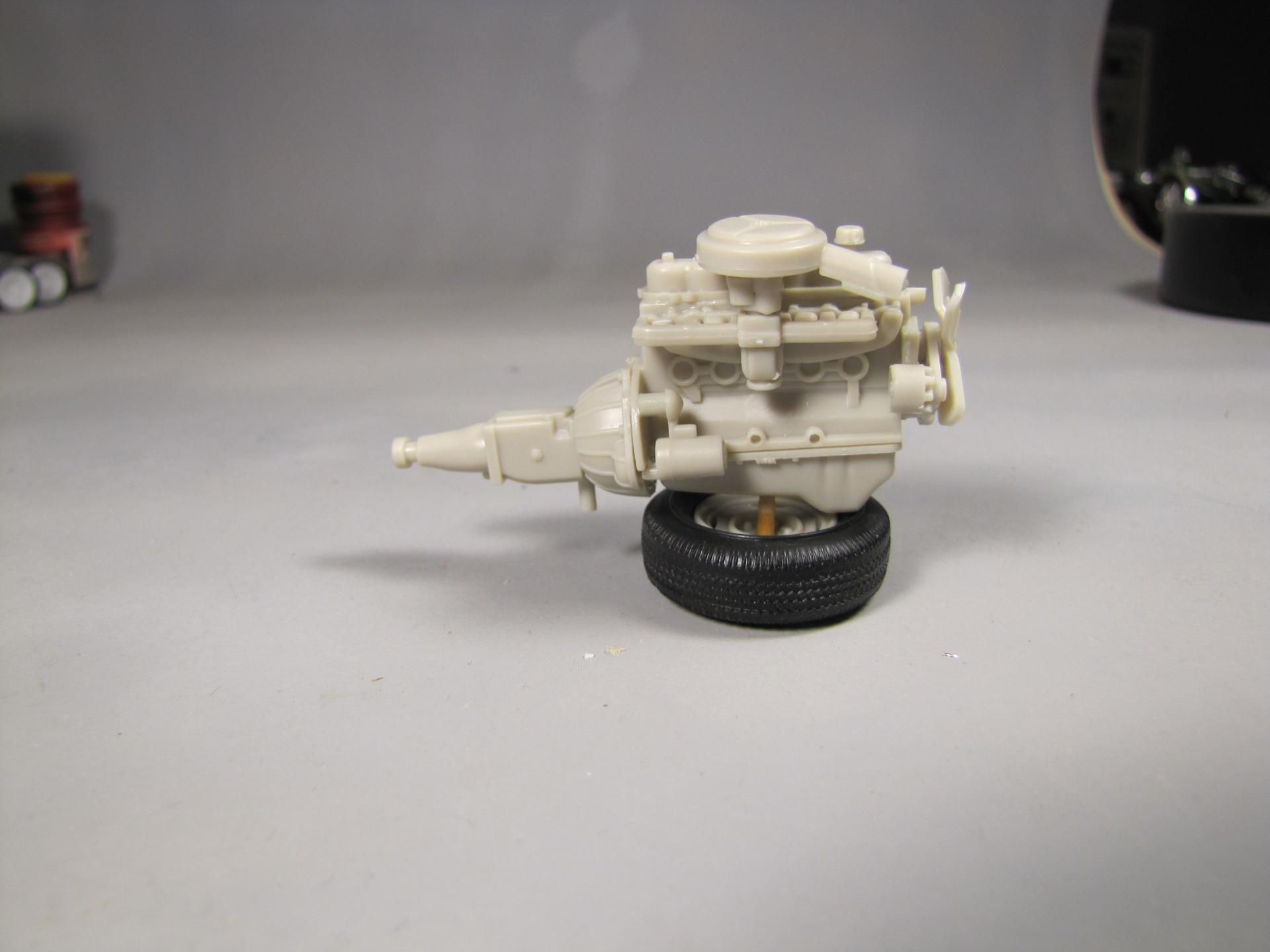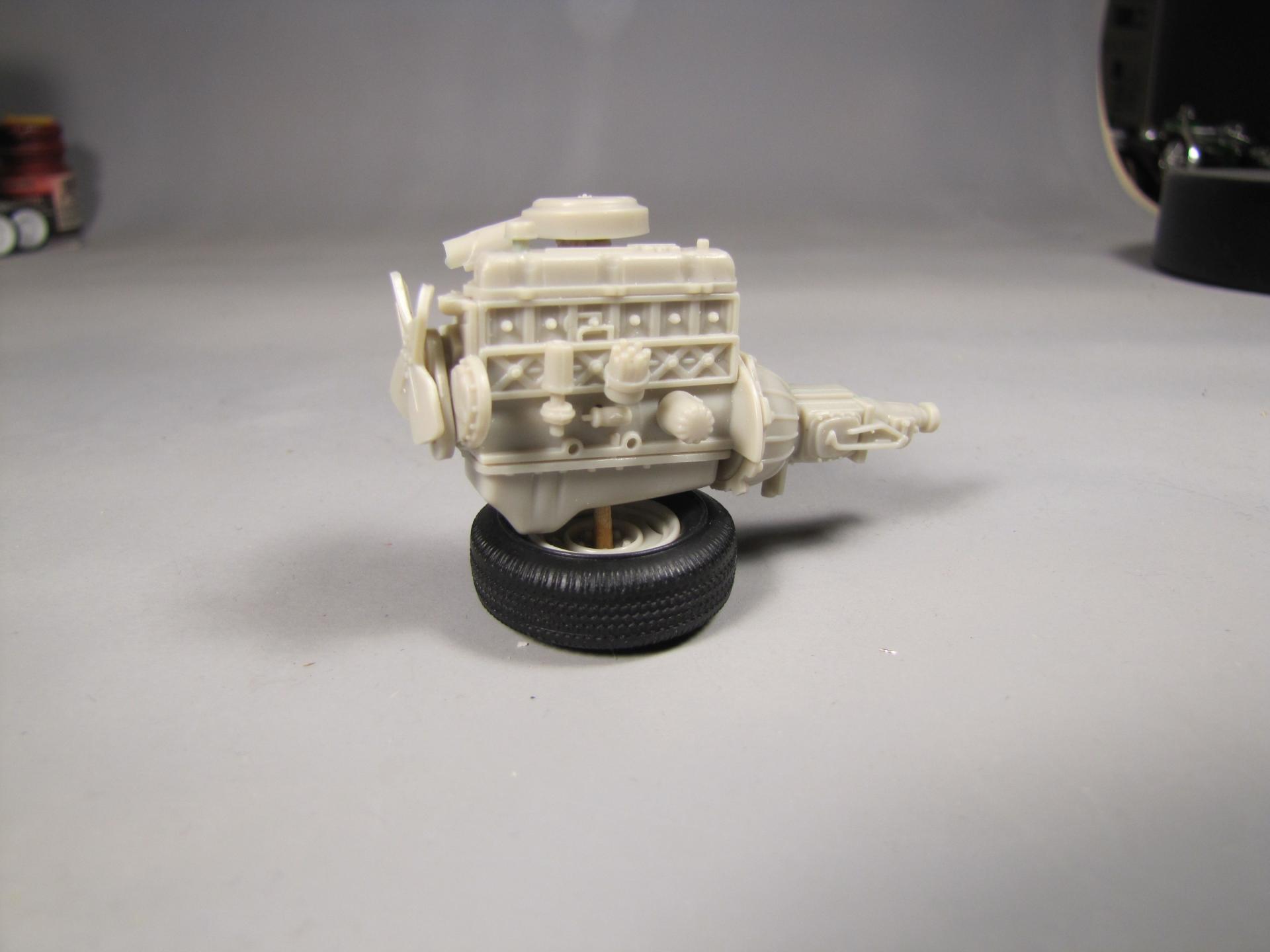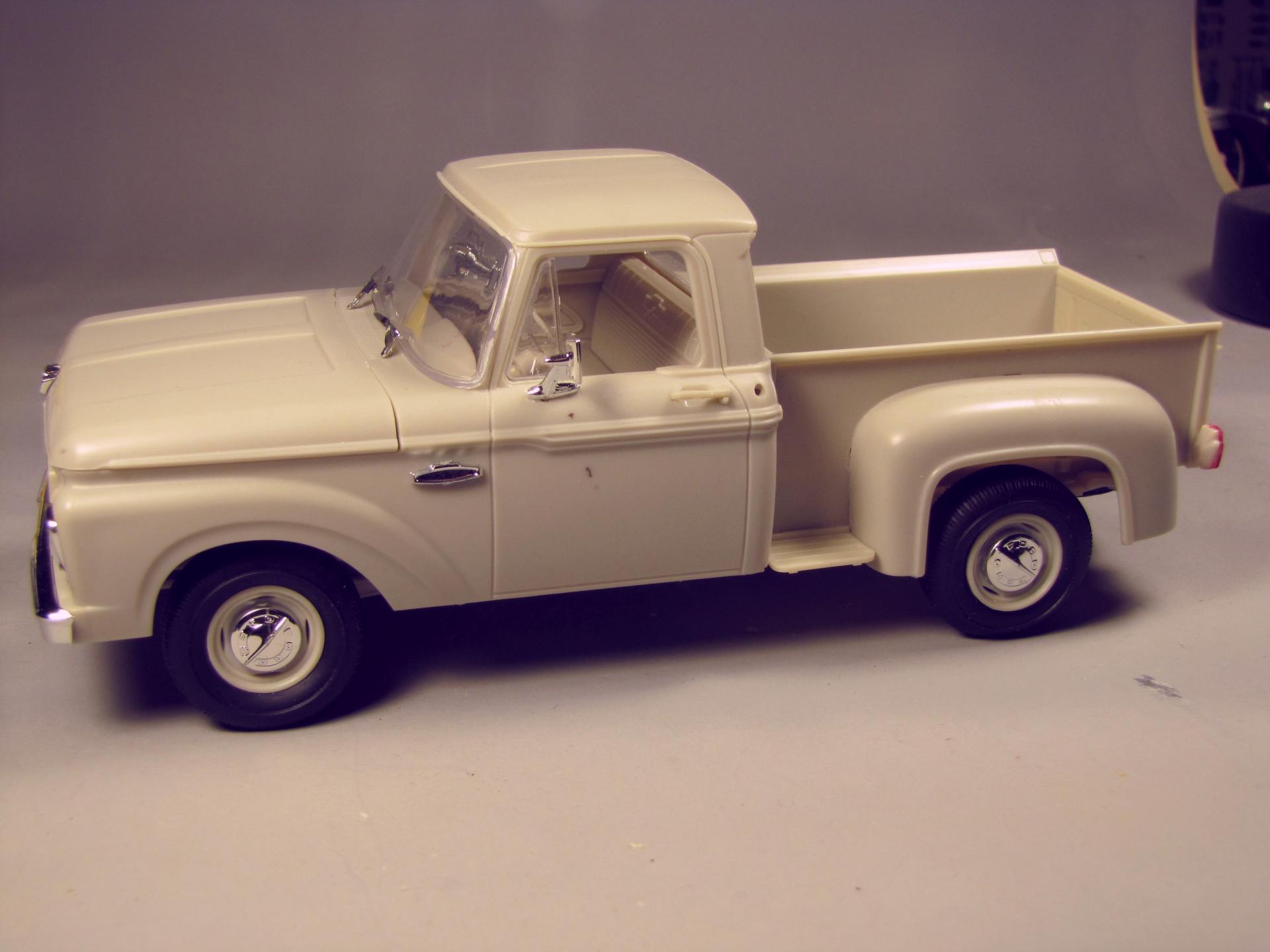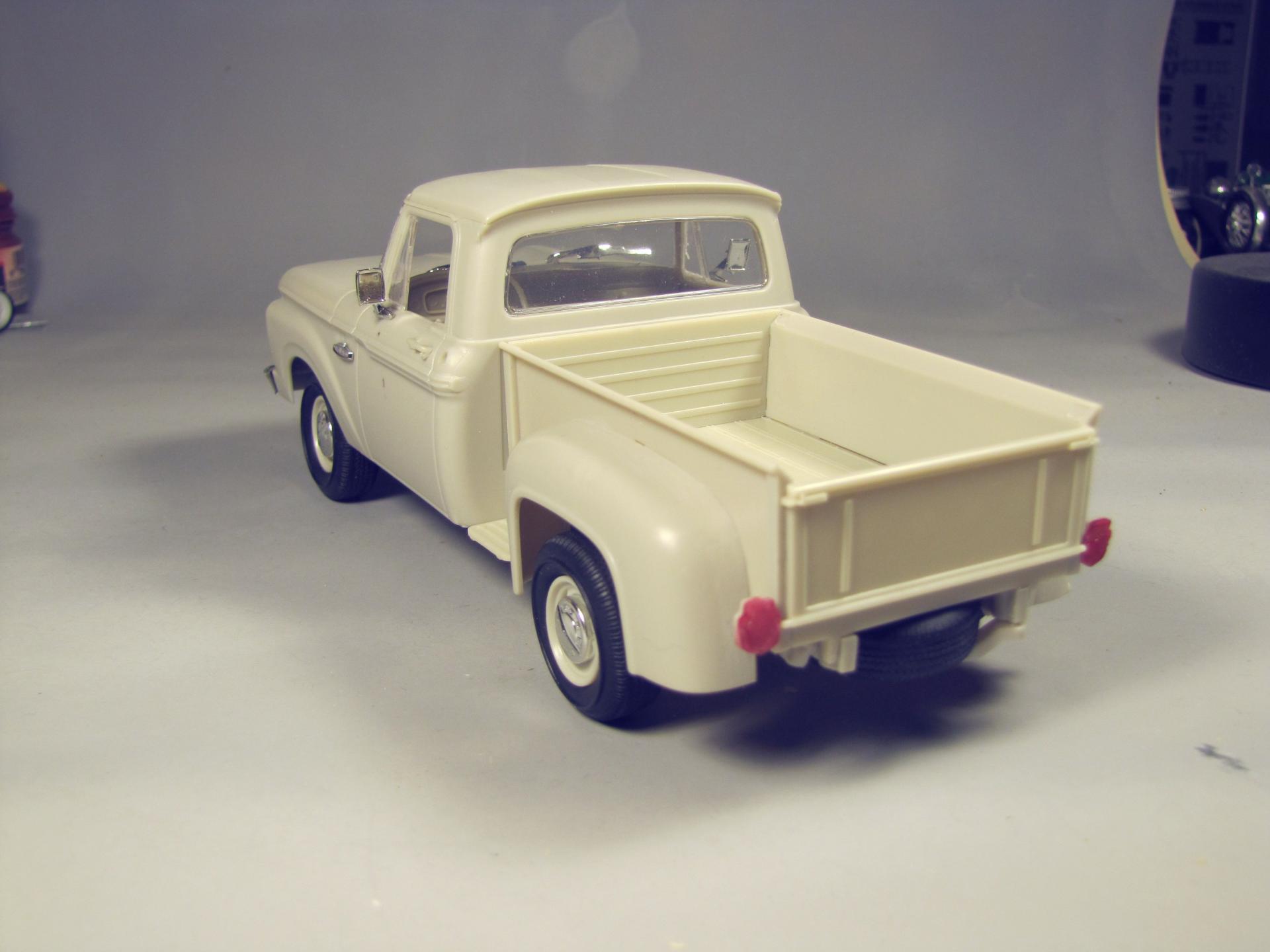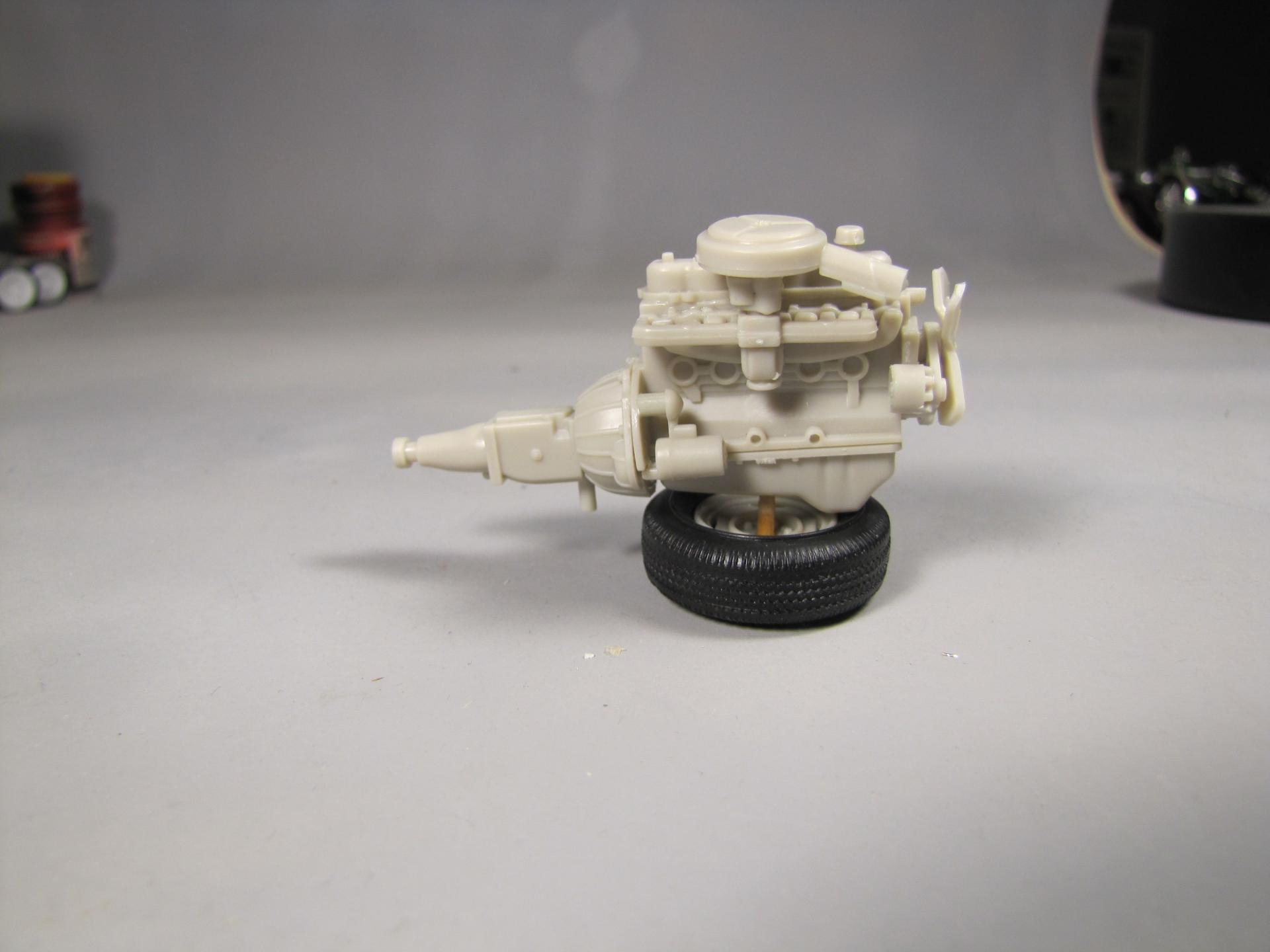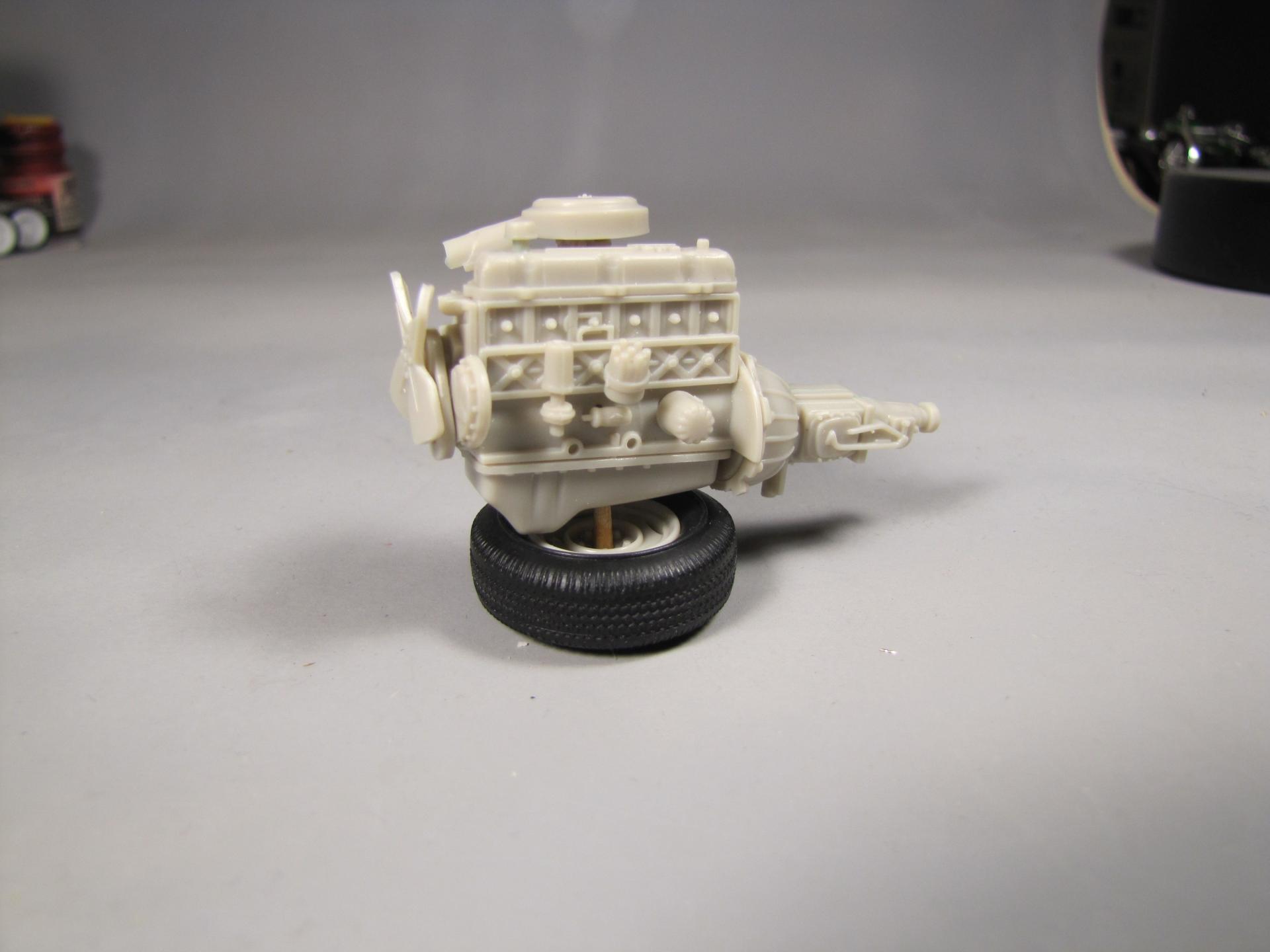
Art Anderson
Members-
Posts
5,052 -
Joined
-
Last visited
Content Type
Profiles
Forums
Events
Gallery
Everything posted by Art Anderson
-
Wire wheels revisited
Art Anderson replied to Aaronw's topic in Model Building Questions and Answers
If you are talking about the '26-'27 welded steel spoke wheels, the spokes are 1/4" thick. Art -
Scriber alternatives
Art Anderson replied to aurfalien's topic in Model Building Questions and Answers
My scriber? For me, nothing beats a modified razor saw blade (sans handle) for scribing straight lines. For curves, I draw out the curve on the body shell with a .5mm mechanical pencil, then use the "heel" (rear end of the razor saw blade) and carefully draw it toward me, using just the last tooth, around that curve then simply repeat the process. Been doing it that way for nearly 50 years. Art -
An interesting sidelight to the story of Pyro: Years ago, at one of the annual Hobby Industry Association of America trade shows I attended in Chicago, I met the man who owned the company. I had to ask just how he came to name the model company. He replied that he was the president and principal stockholder of the Pyrometer Corporation (pyrometers are instruments used for measuring the temperature of surfaces, such as the grille at say, McDonald's). He started Pyro the model company, just to have something to get away from the stress and everyday grind at Pyrometer, and simply drew on that corporate name for his new venture. Kind of a strange "hobby"--more like a second job, but he said he really liked being able to go to the Pyro factory, and just be able to enjoy something else for a respite--a second job that to him was very like having a hobby that also made him a little bit more money. Art
-
A very small category in automotive modeling. Not many ever turn up at model contests, for example, if at all, in my experience. Art
- 40 replies
-
- bonneville cars
- lsr models
-
(and 1 more)
Tagged with:
-
Educate me on Model T speed equipment
Art Anderson replied to Aaronw's topic in General Automotive Talk (Trucks and Cars)
Consider this: In 1924, a Model T based car, using the then very new Frontenac 16-valve DOHC cylinder head, finished in the top ten at Indianapolis, against a field dominated by the likes of supercharged Duesenbergs and supercharged Millers, and that after a lengthy pit stop during the race, when in order to replace a broken front spring, a couple mechanics had to run to the infield, jack a spectator's parked Model T, remove its front spring, run it back to the pits, and change into the race car! (one story, which has some credibility, is that the spectator/owner of the stock T never knew what had been done, as the team ran back with a front spring taken from a Barber-Warnock Model T race car, and put that one into the stock one, nobody being any the wiser!) Art -
Yes, labor costs in China have gone up, and rather dramatically over the past 10 years or so. At any rate, a one piece body shell is actually done from a 6-piece tool, that is part of the whole plastic "tree". The body shell's upper surfaces are cut into the steel tooling as a fixed location, with each body side, the front and rear surfaces being "slides" that when the tool is closed for the injection of molten plastic, then have to slide away from that molded part, before the body can be removed from the "male", or the side of the entire tool that will do the upper and outer parts of the body, along with the rest of the parts tree, as the half of the mold block itself moves away from the molded plastic tree for removal of the entire sprue assembly. Those tools are hardened steel, which makes retooling virtually impossible. To do a modified version of that tooling thus would require retooling both sides of the molds, with that becoming a serious cost, what with all the other parts on the tool having to be cut anew as well. It is my understanding that nowadays, body shells are often cut in a separate tool from the sprue unit that connects all the smaller parts, meaning that a body shell tool can be made anew, apart from the rest of the model kit, but that is a major expense, many thousands of dollars, while the market for the newly-done-version of any kit today is a great deal smaller than what it might have been back 50+ years ago. Today, many newly tooled model car or truck kits are done in such a way, that any and all parts that require different slides or sections can be done in a separate tool, at about the same cost as the old-fashioned "do-the-kit-in-one-single-large-mold-base" as used to be done. In short, while you have the cost of all new tooling, having to run the product in two separate molding machines, which also adds to the cost. And where back in the 60's, it was very possible to amortize the cost of new 1/25 scale kit in a year or less, today it can take upwards of at least two or three years to just pay for the tooling costs, and of course, the costs of developing that newly done body shell have to be added in as well. And then the ultimate manufacturer, even though he must pay those tooling costs before production can begin, faces a rather considerable price just for shipping all the way from China, and then across the US from whichever coast the new product arrives, with a considerably longer period of time in which to get back just to break-even.
-
Look around at supermarkets and/or "Big Box" stores for flexible drinking straws, Art
-
The tires are vinyl (PVC, or Polyvinyl Chloride) and the display case is clear polystyrene. If the proper precautions are not taken at the factory, the PVC Monomer can leach out of those tires, and WILL damage polystyrene over time. It's an old-time problem for modelers, for the most part, but still can happen on occasion. Art
-
It all depends on the size (dimensions of the original tooling), as if there was never a plan for further model years or versions, it would require another tool base, on which to create the desired GMC, and later versions--thus requiring two molding machines, and additional labor staff--thus meaning a higher cost for such modified reissues at the factory loading dock. Art
-
plastic cars.
Art Anderson replied to ewetwo's topic in WIP: All The Rest: Motorcycles, Aviation, Military, Sci-Fi, Figures
I believe those Cadillacs were sold at places like Kresge's and Woolworth's, from bins in their toy departments, back in the 1950's, for all of perhaps 25-cents each. Art -
What other Model As were made in 1/25
Art Anderson replied to junkyardjeff's topic in Model Building Questions and Answers
AMT's Model A Roadster is a '29, always has been. AMT also molded, from MPC tooling, a 1928 Tudor Sedan, which tooling MPC produced a '28 Station Wagon and Roadster Pickup. Art -
Removing decals
Art Anderson replied to junkyardjeff's topic in Model Building Questions and Answers
A little-known fact about decals: The "glue" that holds decals to their sheet of blotter paper, and also to the surface of your model is nothing more than "gelatin"--basically the very same material that is the basis for you know,"JELL--O". I have found, first quite by accident, that a good QUALITY masking tape, laid down over a decal, and rubbed down completely, will almost invariably damage the decal, initially at the edges, sometimes very quickly in the middle of the decal itself. I've used this technique to remove decals off and on for years, especially during my years of building models of Indy Cars, when I wasn't happy at how the application came out. If a decal was laid across say, the "grooves" on the sides of the body shell (that mark the doors edges), that is a weak spot for the decal, especially if the original builder did not work the decal itself--so carefully slit the decal(s) where they cross a door line, and then use the masking tape. Walthers Solvaset works quite well, but so will Isopropyl alcohol (good old rubbing alcohol!), which comes standard as a 70% solution, but most all drug stores also sell the 91% version which is much stronger. If the decals are not laid down over a paint job you want to preserve, Purple Power will strip them in very short order as well, without any damage to the plastic. Art -
Some questions on Double kits
Art Anderson replied to Greg Myers's topic in General Automotive Talk (Trucks and Cars)
Back in the 1960's, yes they did sell for the same MSRP as any single-version kit. I was there, and working my way through college in our LHS. Art -
great tool for spreading body putty
Art Anderson replied to misterNNL's topic in Tips, Tricks, and Tutorials
Stainless steel artists' paint palette spatulas also work quite well. These are found in the art supplies area of any Michael's or Hobby Lobby, even artists' supply stores. These are precisely and cleanly cut shapes, and are "sanded/ground" to a tapered thickness, which also makes they flexible, but still "springy", and when dipped into lacquer thinner are great for smoothing down lacquer spot n glaze putty much more than any wooden or plastic tool can do. Been using them for a couple of decades now. Art -
" Foil Transfer " : What am I doing Wrong ?
Art Anderson replied to 1972coronet's topic in Tips, Tricks, and Tutorials
A .5 mm mechanical pencil also works very well, especially as "pencil lead" is actually graphite, which is a dry lubricant (which does aid this process--use it almost every time I foil a script or badge on a model car body, even along the edges of chrome spears as well. Art -
-
Reducing dropped parts loss
Art Anderson replied to misterNNL's topic in Tips, Tricks, and Tutorials
I simply use a terry cloth bath towel (in my case, it's a dark maroon), which simply catches and holds any small part I might drop in my lap accidentally. My workroom is carpeted with large remnants of closed-loop commercial grade carpeting, which I got at Office Depot years ago, when I moved in here--laid down originally to protect the carpeting already laid down, and in case something hits that floor covering, I have several of the very bright battery operated LED hand-held lamps, two are 10" bar lamps, 4 are 3" round units---those have yet to fail me whenever a part drops to the floor and skitters off somewhere. Art -
Paint Stripper for a Promo Car
Art Anderson replied to Olderisbetter's topic in Model Building Questions and Answers
Sodium Hydroxide (Lye) is water-born, and in my experience, does not at all affect plastic, even the very old Tenite (Acetate) plastic. FWIW, Tenite ceased to be used for making promotional models by about 1960 or so, when more modern plastics became available. Art -
Moebius /Model king 65'Mercury Cyclone A/FX
Art Anderson replied to Mr mopar's topic in Car Kit News & Reviews
Because this one went to the factory before the Pegasus buyout. -
This is where a food dehydrator can really come into play! I've had mine since 2010, and use it for curing out all my paint work. It can take upwards of 2 hours to completely cure enamels to the point of being hard enough so as not to be able to press a fingerprint into the surface of the paint, which at room temperature, can take a week or more. Art
-
I had the privilege of unveiling pretty much final round test shots of this upcoming Moebius kit, this past Sunday at the Classic Plastic Model Car Show in Massachusetts. It was well-received:
-
Those earlier promo's (through at least 1961 at AMT/SMP, 1962 for JoHan) were molded in Tenite, which was DuPont's brand name for their acetate plastic formula. Tenite (Acetate) was chosen, very early on, as the medium for molding promotional model cars, as it is virtually shatterproof, which could not be said for the pure styrene resins available through the mid-late 1950's. Straight styrene was considered dangerous for toys, due to it's breakability into shards that could have sharper edges than your mom's kitchen knives. ABS plastic (a blend of Acrylic, Butyldiene and Styrene) came along about 1960, and by 1962, both AMT and JoHan were using ABS, which while it could be broken, would not shatter if dropped or stepped on. ABS also solved the problem of "warping" when exposed to high humidity or immersion in water that was the big drawback to Tenite/Acetate, and retained the ability to pick up a mirror-sheen from highly polished molds as well. As for that 1/10 scale hollow Ranchero body, that would have been an acrylic (think polyester resin here) casting made by closing up the prototype hand-carved basswood mold patterns, which AMT (and MPC) pattern-makers created, which after such polyester resin molding samples were approved, became the patterns "pantographed" and downsized to 1/25 scale, for model car kit production. Art
